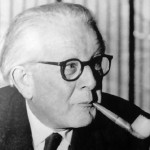 Swiss philosopher Jean Piaget conceived of four cognitive stages of human development. They are as follows:
Swiss philosopher Jean Piaget conceived of four cognitive stages of human development. They are as follows:
Birth to Age Two – The Sensori-Motor Stage: infants develop their thinking processes solely through the body; in the course of moving their arms, legs, and torsos around, infants make things happen accidentally, and want to make them happen again, and so begin to experiment, create sensori-motor hypotheses, and engage in other deliberate actions designed to manipulate the world. In the act of doing these things, infants create very simple sensori-motor “schemas” or cognitive maps of how the world works.
Age Two to About Seven – The Preoperational Stage: young children have begun to create inner imagery and use langugage to represent actions; they also can symbolize through drawing, play, and other means. This stage in Piaget’s theory is a transitional stage when the young child is using a variety of cognitive strategies to make sense of the world. These strategies are not logical in the adult-sense of the world, but involve using magic, animism (imbuing inert objects with life), participation (believing that inert objects are involved with our lives), and other supposedly non-rational means of explaining the world.
Ages Seven to Eleven – The Concrete Operational Stage – Somewhere between the ages of five and seven, children begin to think about the world in a way that is akin to adult modes of rational thought. They develop the ability to classify, categorize, seriate (e.g. put objects of different lengths in a series), and engage in “reversibility thinking” (e.g. to mentally reverse an operation – for example, to pour water from a short fat beaker into a longer thin beaker and back again, understanding that the amount of water has not changed in the process). Once children reach concrete operational thinking, they are able to engage in formal reading and math instruction, and games and sports that have social rules involving reciprocity, or taking the other person’s point of view into consideration.
Ages Eleven to Adulthood – The Formal Operational Stage. Once kids reach this stage in early adolescence, they become capable of “thinking about thinking.” That is, they no longer need concrete materials (such as math manipulatives) in order to think – they can operate in pure symbolic langauges (such as algebra). Because they don’t need the concrete world as a basis for thinking, cognition at this stage can really take off into the stratosphere with interests such as science fiction, computer programming languages, and political and religious idealism.
For more information about the stages of life in different cultures and traditions, see Thomas Armstrong, The Human Odyssey: Navigating the Twelve Stages of Life
This article was brought to you by Thomas Armstrong, Ph.D. and www.institute4learning.com.
Follow me on Twitter: @Dr_Armstrong



















